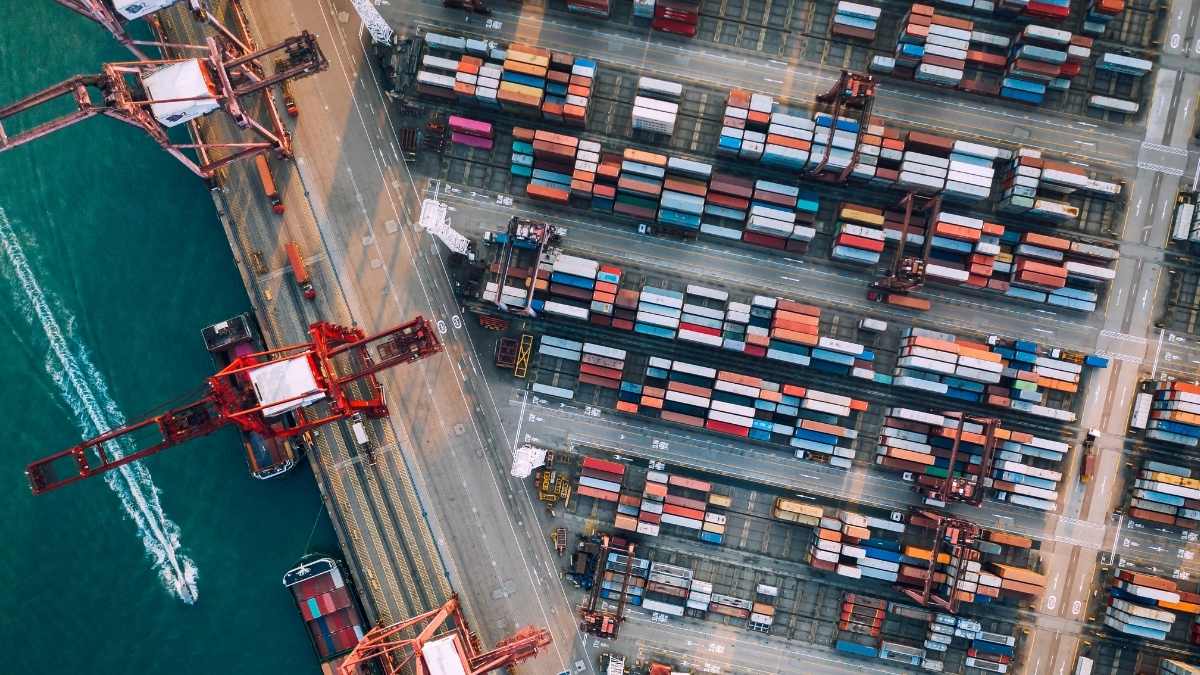Logistics
Logistics in Slovenia: Positioning for the future
Uroš Urbas
JOURNALIST AT THE ADRIATIC
Two important milestones marked Slovenian logistics in 2021: the start of the construction of the Second track between Divača and Koper, and the entry of a Czech partner into the ownership of the Slovenian Railways Freight Transport company.
Moving freight traffic from road to rail is a priority because of the congestion on the motorway (notably on A1 Primorska) but also due to the environmental impact of road freight transport. This is already forcing logistics operators to prepare for change, and the long-awaited second track between Divača and Koper, scheduled for opening in May 2026, is expected to be a catalyst.
To put these trends in geopolitical context, let’s briefly discuss Slovenia’s geographical location. Crucially, the country is traversed by four corridors of the European core rail network. Freight flows run from North-Western and Central Europe to South-Eastern Europe and reaching as far as Turkey. Access to CEE markets is much shorter and faster from the Port of Koper than from the North Sea ports. Slovenia is an ideal base for access the markets of South-Eastern Europe. Hence, Slovenia is an important hub for serving the neighbouring landlocked countries. Slovenia has a huge potential to further strengthen its visibility as a logistics hub, while mitigating the environment damage brought by increased freight transport. What might be the best way to achieve this? So far, the most important obstacle to increasing transhipment has been the single track between Koper and Divača – a bottleneck in all logistics flows coming into Slovenia and proceeding onto Central Europe. Also, the existing track offers very limited capacity for railway operators and the Port of Koper. However, the Second track, once operational, will not simply generate new business on its own. In addition to new infrastructure, innovative solutions and competitive services will have to be applied as well.
Why the Second track is crucial
The idea of building a Second track railway has been discussed in Slovenia for more than half a century. The current single-track line between Koper and Divača is outdated and insufficient to meet the speed and volume needs of the port. For instance, once the current line reaches maximum capacity, cargo routinely piles up in the port. This means that major customers accounting for large volumes of container throughput are forced to divert their cargo to other North Adriatic ports. This is more than a minor inconvenience – surveys shows that logistics operators, when choosing ports, focus on the quality of rail connections to the inland and the ability to get large volumes of cargo to the end user as quickly and affordably as possible. In 2021, the privately-held Czech EP Holding entered SŽ-Tovorni promet, a subsidiary of the state-owned Slovenian Railways, as a strategic partner with a stake of 49%. The rationale of the deal is to help Slovenian Railways become the leading railway operator in the Western Balkans (with planned further acquisitions in the region). But above all, the partnership is supposed to generate growth in revenues and profits, and better services for logistics users.
What comes after the Second track?
Decision-makers at the state-owned company 2TDK (which is overseeing the construction of the Second track, trying to keep the budget well below €1 billion) are promising a boom in passenger transport and tourism after the project is set in motion. Hopes of a revival in passenger transport, or better connections between Ljubljana and Koper, are considerable.
The Second railway line is only a necessary precondition if Slovenia is to take advantage of its strategic location, and to position itself as a logistical hub on the European map. The upgrade of the link between Koper and Divača must be followed by the modernisation and electrification of all the strategically important main railway axes. It may be stating the obvious, but all of them will need to have two tracks.
What about the Port of Koper?
While the construction work on the Second track is in full swing, the other logistics operators need to keep pace as well. The Port of Koper, for instance, has had an intensive investment period. In 2020, they invested almost €68 million in the new infrastructure and equipment, followed by €75 million of investments planned in 2021 (you can read the article more about Luka Koper investments on page ___).
The Second track will significantly increase the competition between logistic operators, and it is expected that their number will eventually reach several dozen, perhaps even 30 active freight providers. At the same time, it is an opportunity to reconsider the old question whether cooperation between the North Adriatic ports is possible. As the southern entry point for supplying European landlocked countries, the Adriatic Sea is certainly a thorn in the side of the Northern European ports of Rotterdam, Antwerp, and Hamburg. What about an alternative? Can Koper, Trieste and Rijeka arise as serious competitors to these ports? Certainly, the North Adriatic ports offer an interesting proposition for cargo and containers, but their opportunities also lie in specialisation. For example, the Port of Koper already specialises in cars, while the focus of Trieste is on trucks. The Port of Koper specialises in petroleum products and Trieste in crude oil. So there is enough business for all of them if they specialise in a particular niche. Hence, the only question remains whether it is possible for business interests to prevail among the managers of the North Adriatic ports to ensure cooperation and integration between them. This may bring them more business, more revenues, and a greater role in supplying the hinterland countries.
THE ADRIATIC
This article was originally published in The Adriatic: Strategic Foresight 2022
If you want a copy, please contact us at info@adriaticjournal.com.

